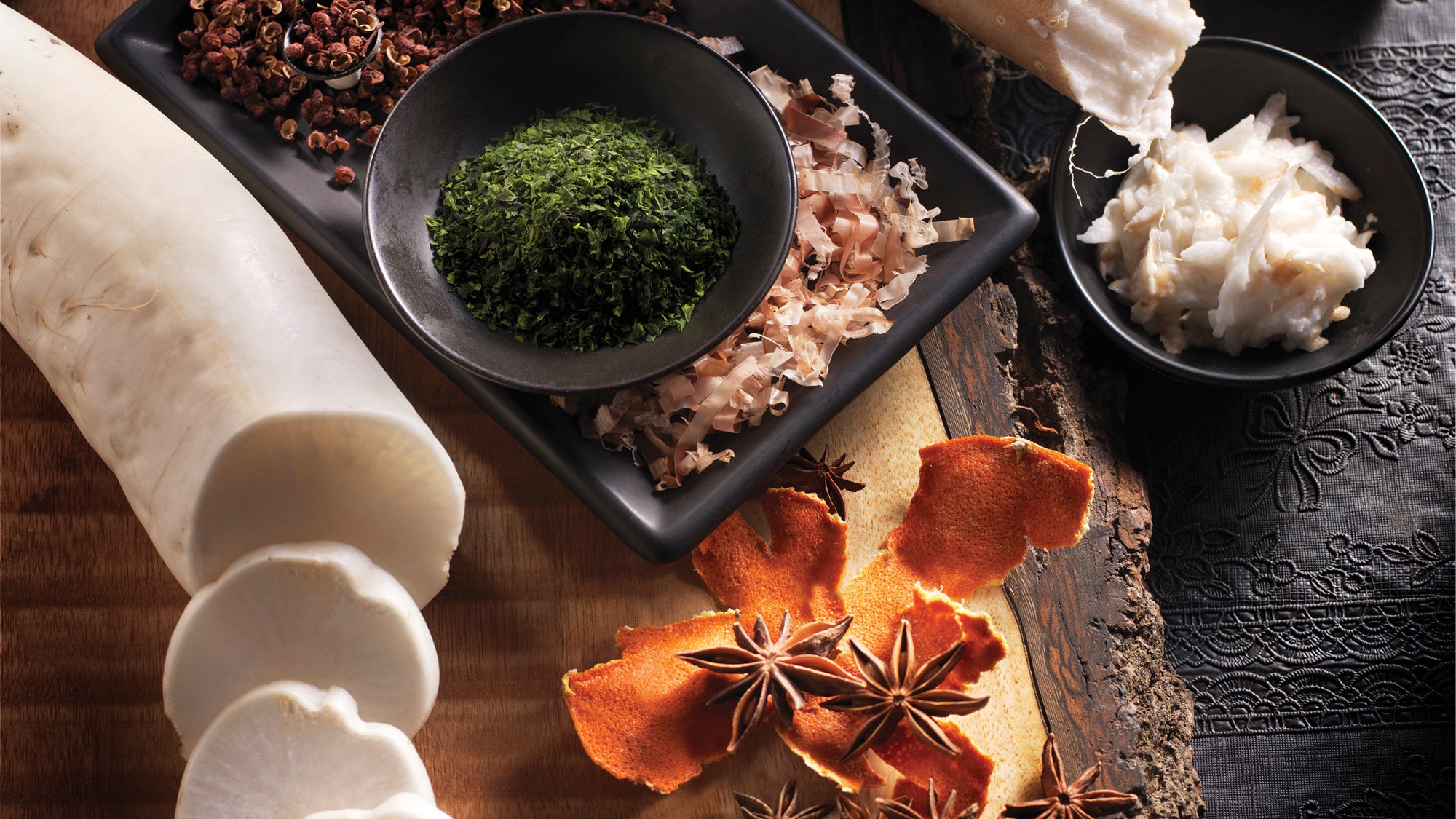7 Uncommon Asian Foods You Need in Your Pantry

Must have Asian pantry ingredients article
1. Nagaimo
A member of the Dioscoreaceae family, nagaimo is a soft and starchy yam that’s often used in its grated form as a binder in the batter of Japanese traditional pancakes, okonomiyaki. It can be irritating to some people’s skin because of the calcium oxalate crystals it contains, so best to wear gloves when handling.
Related: Try These Asian “Pastas”
2. Szechuan Peppercorns
(aka anise pepper or Chinese pepper)
Despite their name, these berries are not part of the peppercorn family. From China’s Szechuan province, they come from the prickly ash tree. They cause a light tingling sensation in the mouth that when combined with other spicy notes in a dish is said to help mediate heat.
3. Aonori
(aka dried green laver)
A Japanese ingredient, this iron-rich dried flaked seaweed is used as a seasoning on dishes such as okonomiyaki, a traditional pancake from Osaka. A similar ingredient, aonori ko is also dried seaweed but in powdered form instead of flakes.
Related: Vietnamese-Style Fish Sauce Chicken Drumsticks
4. Katsuobushi
(aka dried bonito or bonito flakes)
Japanese dishes often use dried bonito, a type of tuna, to add savory flavor to broths, soups and sauces.
5. Daikon Radish
In Japanese, dai means large, and kon means root. With a mild, fresh flavor and crisp texture, this radish can be used raw, pickled or cooked.
Related: Pancit Palabok Recipe
6. Dried Tangerine Peel
(or dried mandarin peel)
A staple in Chinese cooking, tangerine peels are dried until hard and they have a unique, sometimes bitter flavor. You can purchase them, or dry your own in the sun, in a dehydrator or in the oven.
According to Mastering the Art of Chinese Cooking by Eileen Yin-Fei Lo, the older the tangerine peel, the better. The author notes that one Hong Kong chef refused to use dried tangerine peel unless he was sure it was at least 30 years old!
7. Star Anise
Originating from a small type of evergreen tree in China, star anise contains the same oil that gives anise seed its flavor, though star anise is slightly more bitter. It is used in its ground form in Chinese five-spice powder.
Related: Osaka-Style Okonomiyaki